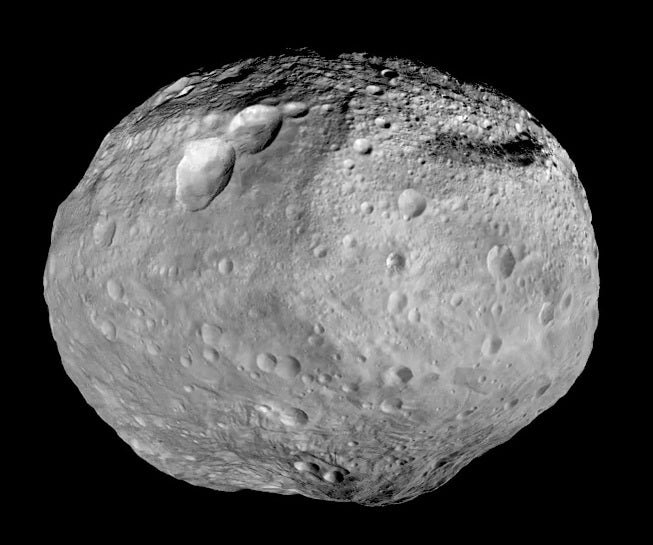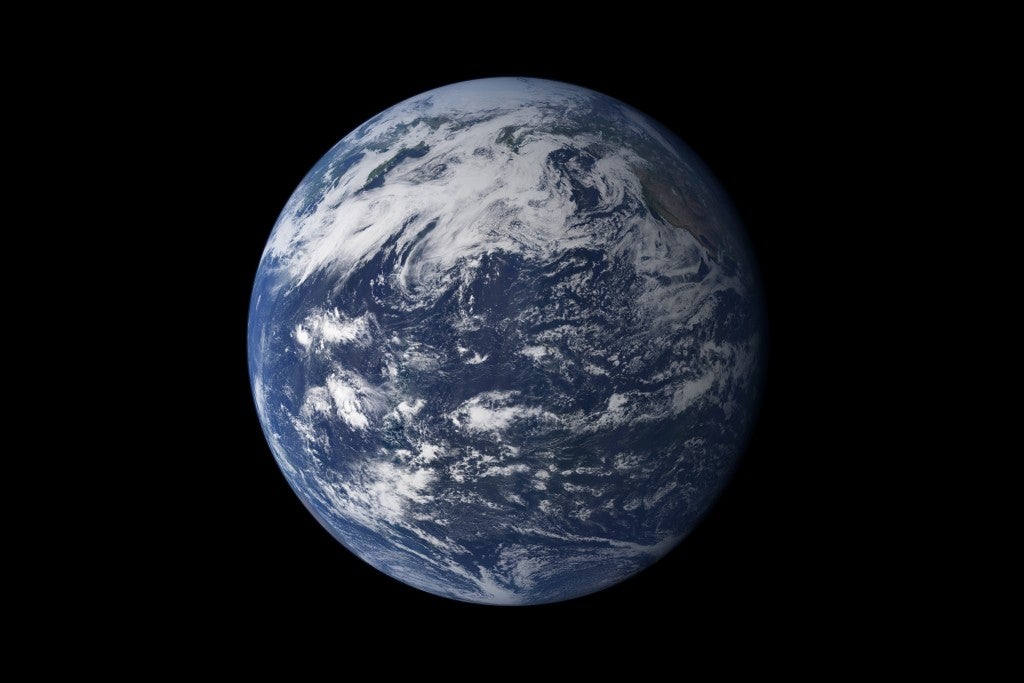Enjoy water from the source
Earth watery from birth – A geological study of meteorites and asteroids indicates that surface water was here at the beginning, disputing a theory that water came to Earth later via crashing comets. Leonid Meteors peak next lMonday. Worth a look this Sunday night. Jupiter and the Moon – midnight 11/14; Mars evening sliding through Sagittarius; Mercury low in the Southeast at dawn.
November 10, 2014
[Dave Heller] Were Earth rivers and oceans originally filled from out-of-this-world raindrops? Let’s lift our umbrellas with Derrick Pitts, chief astronomer at the Franklin Institute. Derrick, there is this notion that H20 stowed a ride on crashing comets.
[Derrick Pitts] Some scientists very early on had the idea that it was probably part and parcel of the whole package of materials that was here as the planet was formed. But that idea was shot down a few years ago by a competing idea that a lot of the water on Earth came from crashing comets. If you look at the composition of comets you find that there is the frozen carbon dioxide, but there’s also H20 there as well. And the thought was because of the extreme number of comets in the early history of the solar system. Perhaps after the Earth was formed, those comets actually brought the water to Earth. Turns out it seems as if that idea is all wet. And the reason is if we look around more carefully at the early history of the solar system looking for evidence of the existence of water as the solar system was formed, we find some pretty interesting data.
Geologists at the Woods Hole Oceanographic Institution analyzed materials from the early history of the solar system. Now where might they find that material? Well, one of the best places to look is in meteorites because meteorites are leftover from the beginning of the solar system. And there’s actually quite a choice of meteorites to make. There were those meteorites that were formed when the sun was formed, but before the planets of the solar system formed. So that would give us a good pristine look at the very earliest history of the solar system. Then we can look at the rocks of our planet. And then we can look at the rocks from other planets that were formed after the Earth. That way we have a way to compare what the chemistries of the solar system were at these different points. And we can also find those materials right here on the planet’s surface, which makes it pretty easy for us to compare them among those three sources.
What geologists at Woods Hole have discovered is that the chemistry of what are called carbonaceous chondrites, those meteorites that were formed when the sun was formed and meteorites that come to the Earth from the minor planet Vesta — we now know as asteroid Vesta — have the same chemistry. And in that chemistry is a tremendous amount of water. So if we look at the composition of carbonaceous chondrites, if we look at the composition of the material that comes from Vesta, and if we look at the composition of Earth materials, we find out that these are all very similar. They have the same chemistry. And so because they have the same chemistry, then we find that there was water very, very early on in the history of the solar system before the planets formed. Now as the Earth accreted together from materials in the early history of the solar system just after the sun was formed, a lot of that material was the carbonaceous chondrites which have water in them. So now what this means is that the Earth when it formed had plenty of water in that mix. So it seems as if a case — a very strong case — can be made that the Earth was a wet planet when it began.
Presumably did all of the planets in our solar system have water?
And what a great question that is. As we go back and look at the composition of the other inner planets of the solar system, we have to begin to ask that question too. Does their chemistry also match the chemistry enough to indicate that they were wet as well? We know that Mars was much warmer and much wetter in its early history, but right now when we look at Venus and we look at Mercury, that doesn’t seem to be so much the case because of their current environments. Yet if we look at the chemistry of the rocks, we might be able to figure a different story for those. Likewise when we look out into the distant solar system we find that moons of some of the gas giants also seem to have quite a bit of water involved in them as well. So, maybe this theory can be stretched across a lot of the composition of various kinds of bodies in the solar system, including the Earth.
So how is it that we have pieces of Vesta here on Earth?
Yeah, that’s also a great question. When we look at Vesta what we see really is one of the last remnants of a proto-planet construction. If Vesta could have existed without any sort of interaction, shall we say, with other bodies in the early solar system like the inner planets of our solar system, we find that what’s left of Vesta is this basaltic material very much like the basalt of the ocean floors of our planet. So we know that it also had the same kind of differentiated interior structure like our planet has, and thus could have been one of these other inner bodies of the solar system. A lot of its material has blown off but all that’s left is just this 325 mile piece that we can see in the evening skies occasionally.
-

Composite greyscale image of Vesta taken by the Dawn spacecraft. Credit: Wikipedia
Let’s move on from pieces of Vesta to pieces of Leonid.
Typically the Leonid meteor shower is not a very strong shower, but it’s worth a look next Sunday night. Actually the meteor shower peaks on Monday, but it’s good to take a look the night before because we might be able to see some significant activity. The radiant point rises above the eastern horizon at about 11 p.m., so anytime from 11 p.m. to sunrise the next morning I’d advise the same thing. Tuesday morning as well.
And while we’re looking aloft, what else is there to be seen?
Really great stuff to be seen this week in the evening sky. If you notice Mars over in the southwestern portion of the sky right after sunset — all this week it’s slowly sliding to the east, as the star field behind it of the constellation Sagittarius is slowly sliding to the west. So it’s as if Mars is holding its position while the star field slides away behind it. Also in the evening sky we find that Jupiter is rising earlier and earlier. A month ago it was an early morning object before sunrise, now it’s rising right around midnight. We’ll find that on Friday at midnight it rises right along with the moons. So you’ll get a good view of these two objects not far from each other. Mercury also is very low on the southeastern horizon in the morning just before dawn, around 6 a.m.
WHYY is your source for fact-based, in-depth journalism and information. As a nonprofit organization, we rely on financial support from readers like you. Please give today.





